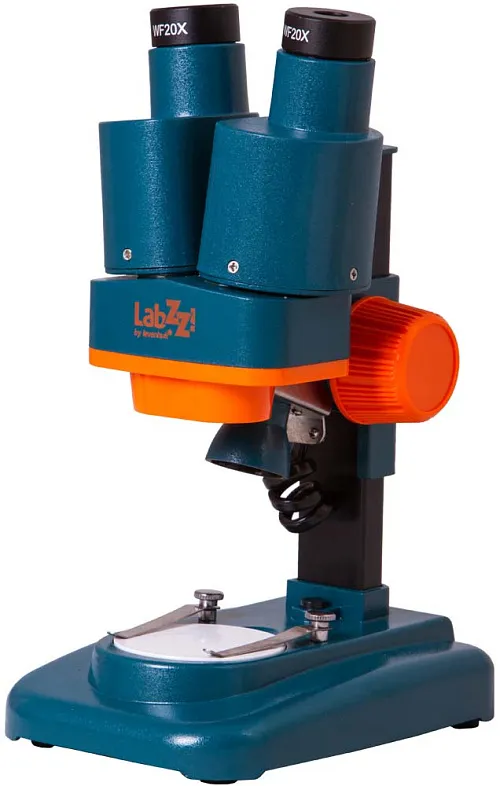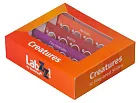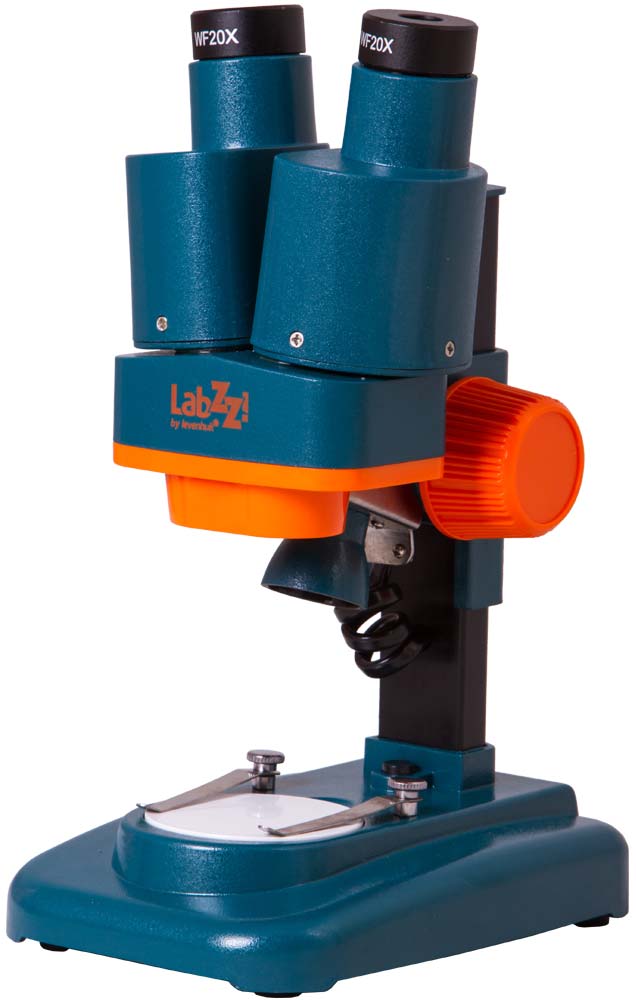Levenhuk LabZZ M4 Stereo Microscope - Exhibition Item
Magnification: 40x. Stereo Microscope. Working distance: 75mm
| Product ID | 77919 |
| Brand | Levenhuk, Inc., USA |
| Warranty | lifetime |
| EAN | 2400000048237 |
| Package size (LxWxH) | 17x13x25 cm |
| Shipping Weight | 0.77 kg |
Special price! Further discounts or special offers cannot be applied in this case.
Exhibition copy.
Damaged gift box and internal packaging. A new, unused item with absolutely no signs of use. The item is missing its original packaging or the packaging is damaged.
Otherwise, the product is fully functional.
Exhibition copies cannot be exchanged or returned for a refund. Levenhuk LabZZ M4 Stereo Microscope is perfect for studying large minerals, rocks, coins, soil samples, plants or insects. This model is designed specifically for kids. The microscope is relatively small, lightweight, and easy to handle – it will help a young biologist conduct real scientific experiments and learn more about the world around us. The microscope has a convenient binocular head and objective lens of 2x magnification. You can use the two 20x wide field eyepieces included in the kit, and get total magnification of 40x. Stereo images render the tiniest details of an observed object. The large field of view allows studying extended objects, and 40x magnification helps to learn textures in detail. The prepared slides are affixed to the round stage and are fixed with metal clips. Under insufficient light conditions, the upper LED illumination will be helpful. It is powered by 2 AA batteries (not included). The kit includes: Levenhuk LabZZ M4 Stereo Microscope is compatible with Levenhuk digital cameras (purchased separately). Levenhuk digital cameras are installed in the eyepiece tube instead of the eyepiece.
| Product ID | 77919 |
| Brand | Levenhuk, Inc., USA |
| Warranty | lifetime |
| EAN | 2400000048237 |
| Package size (LxWxH) | 17x13x25 cm |
| Shipping Weight | 0.77 kg |
| Type | stereo/instrumental |
| Microscope head type | binocular |
| Optics material | optical glass |
| Head | fixed (non-rotatable) |
| Head inclination angle | not angled |
| Magnification, x | 40 |
| Eyepiece tube diameter, mm | 23.2 |
| Eyepiece tube diameter, mm | 0.9 |
| Eyepieces | WF20x (2 pcs.) |
| Objectives | 2x |
| Working distance, mm | 75 |
| Working distance, mm | 3 |
| Interpupillary distance, mm | 50 — 75 |
| Interpupillary distance, mm | 2 — 3 |
| Stage, mm | Ø50 |
| Stage moving range, mm | fixed |
| Stage features | with clips, white plate |
| Focus | coarse: 35mm |
| Body | plastic |
| Illumination | LED |
| Power supply | 2 AA batteries (not included) |
| Power supply: batteries/built-in battery | yes |
| Operating temperature range, °C | -5...+40 |
| Operating temperature range, °C | 23...+104 |
| User level | elementary |
| Assembly and installation difficulty level | extremely simple |
| Application | elementary, for applied research |
| Illumination location | upper |
| Research method | bright field |
We have gathered answers to the most frequently asked questions to help you sort things out
Find out why studying eyes under a microscope is entertaining; how insects’ and arachnids’ eyes differ and what the best way is to observe such an interesting specimen
Read this review to learn how to observe human hair, what different hair looks like under a microscope and what magnification is required for observations
Learn what a numerical aperture is and how to choose a suitable objective lens for your microscope here
Learn what a spider looks like under microscope, when the best time is to take photos of it, how to study it properly at magnification and more interesting facts about observing insects and arachnids
This review for beginner explorers of the micro world introduces you to the optical, illuminating and mechanical parts of a microscope and their functions
Short article about Paramecium caudatum - a microorganism that is interesting to observe through any microscope















